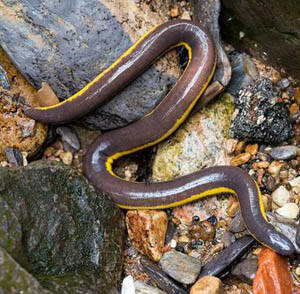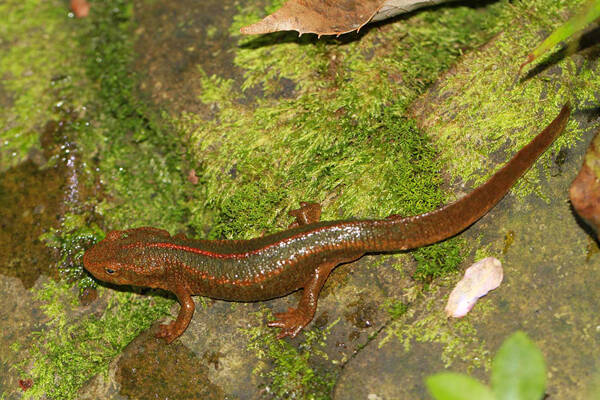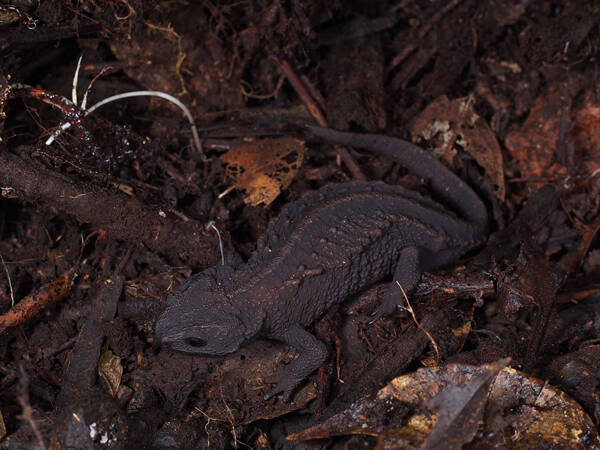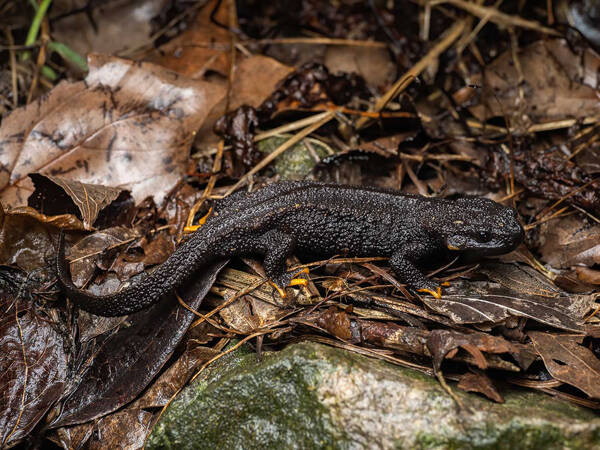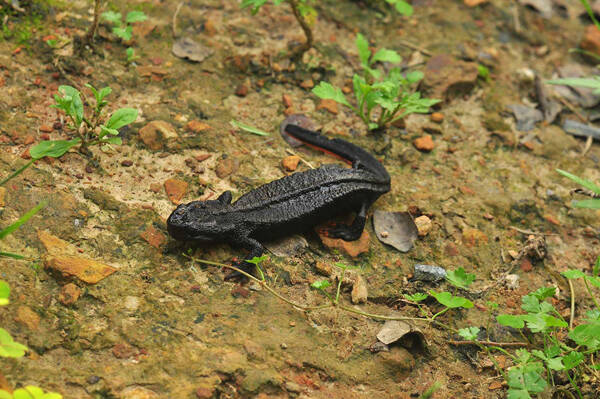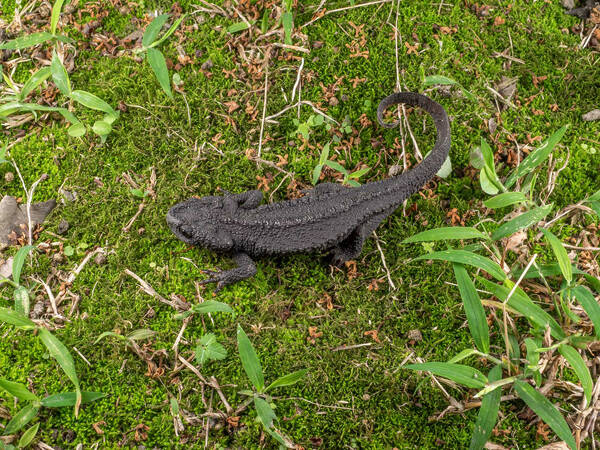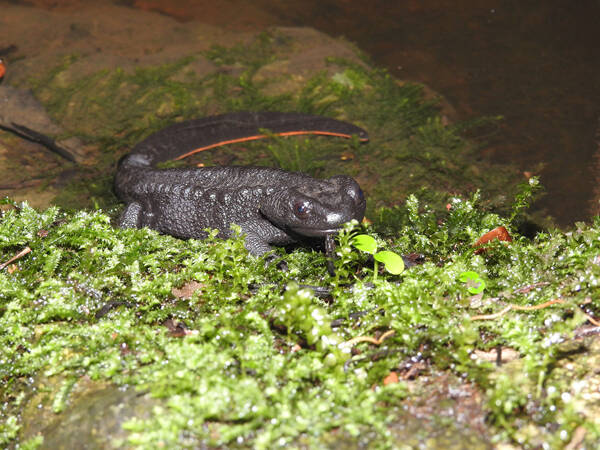Pseudohynobius shuichengensis
IUCN
LCBasic Information
Scientific classification
- name:Pseudohynobius shuichengensis
- Scientific Name:Pseudohynobius shuichengensis
- Outline:Urodela
- Family:Caudata Hynobiidae Pseudohynobiidae
Vital signs
- length:18-22cm
- Weight:
- lifetime:
Feature
The entire back is purple-brown with no different colored markings.
Distribution and Habitat
Endemic to China, distributed in Guizhou (Shuicheng).
Lives in limestone mountainous areas at an altitude of 1910-1970m, where there are evergreen trees, shrubs and weeds, and the vegetation is lush.
Appearance
The body is relatively large, with a flat, oval head; the snout is rounded and has no lip folds; the premaxillary fontanelle is large, the lacrimal bone is connected to the external nostrils and eye sockets, and the vomerine tooth row is shaped. The trunk is cylindrical, slightly flattened dorsally and ventrally; the rear section of the tail is very flattened, and the end of the tail is mostly sword-shaped. The entire back is purple-brown, without different color markings; the ventral surface is lighter in color.
Details
The Shuicheng Salamander is a tailed amphibian of the family Salamanderidae and the genus Salamander. This species is similar to Pseudomonas maculata, but the body tail and the back of the limbs of this species are purple-brown without yellow patches; the limbs are long, and the front half of the palms and soles overlap when the front and rear limbs are close to each other.
The Shuicheng salamander lives in a limestone mountainous area with an altitude of 1910 to 1970 meters. There are evergreen trees and shrubs and overgrown weeds on the mountains. The vegetation is luxuriant, the surface litter layer is thick, the water quality of the streams is clear all year round, and the humidity in the environment larger. Adult salamanders generally inhabit the leaf litter, grass, soil caves and limestone caves in the forest 10 to 20 meters away from the water. They live a terrestrial life during the non-breeding period and go out at night from 21:00 to 24:00 to feed on insects and snails. and other small animals for food.
The breeding season is from early May to late June. Tian Yingzhou et al. (2006) reported that during 16 field expeditions in three years, they turned over rocks and carefully observed the salamander's living area, but found no egg clusters in the stream. During the breeding period, adult salamanders enter spring water caves or rock caves to pair up and lay eggs, and the egg bags are laid in the caves. When laying eggs, the female salamander first sticks the gel ball on the handle to the stone wall or tree root in the spring cave, and the other end is free and flips freely in the water. A total of 1,064 eggs were observed in 35 egg bags in the wild, and the natural fertilization rate was 96.4%. Observed in the wild environment, most 150-day-old larvae hide under dead leaves and stones beside streams or ponds to hibernate. They emerge from hibernation in mid-March of the following year and complete their metamorphosis from May to July, and then go ashore to camp on land. Life.
This salamander is an endemic species in China. Its origin is very narrow and its number is rare. It is a rare amphibian. It is of great significance in studying the evolution of tailed amphibian systems. It is recommended to strengthen the protection of the local ecological environment and water resources to maintain The salamander's breeding grounds are not damaged.
It is listed as Level 2 in the "List of National Key Protected Wild Animals in China".



